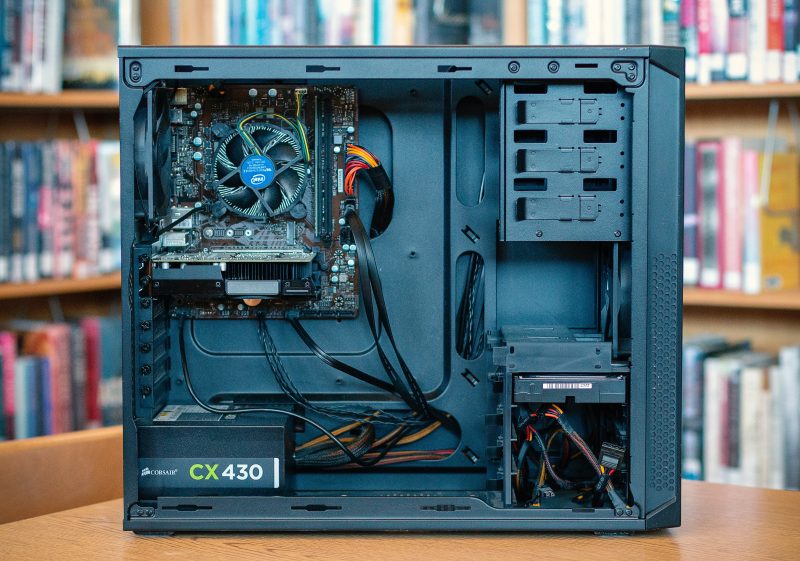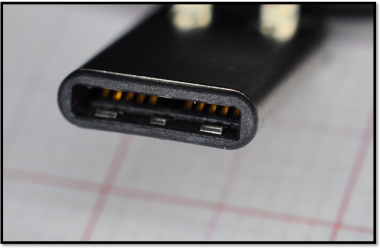Power supply units for PCs have more or less stayed the same for quite a few decades already. So long as the appropriate connector is available, you can more or less use still an old, high-quality, and efficiency-certified PSU to meet component power draw requirements both in the near and far future.
That is… until Intel dropped the big announcement related to their upcoming 12th gen Alder Lake CPUs. The ATX12VO standard, should mobo manufacturers universally agree to it as it seems, is set to change the way power supplies (and consequently motherboards) are designed forever.
Current ATX12V Standard Recap
We’ll skip over the version history stuff and electrical engineering-related intricacies to go straight onto PC building stuff. Basically, the ATX standard for power supplies represents the following characteristics and requirements when mixing and matching PC components:
- Each of 3.3V (volt), 5V and 12V power rails to supply different components of the motherboard (or the motherboard itself)
- Physical modularity to previous versions. That is, minor configuration changes allow newer power supply connectors to fit in snugly with older systems and components (that still use the ATX standard). A 4+4 8-pin connector, for example, can power modern 8-pin CPUs, as well as older ones that use only 4 pins (simply by splitting the two parts).
- Physical modularity to GPU power requirements. Most ATX power supplies today have two 2+6 8-pin connectors, allowing you a wide combination of different plugging configurations as needed by the GPU.
- SATA peripherals are powered separately, much like how older molex connectors powered IDE peripherals a few decades back.
- 24-pin power connectors universally supply power to everything connected to the motherboard with the exception of the CPU. This includes USB ports, PCIe slots, and RAM.
Biggest Changes in ATX12VO
ATX12VO shakes up the long-time industry standard by separating a few power resources from certain PC components while splitting the main power delivery to accommodate both power-efficient and power-hungry systems. All in all, the new standard is an attempt to optimize power delivery further, with the biggest noticeable improvements going towards low-activity or idle state power (an issue brought up by the new Appliance Efficiency Regulations many years ago, which had officially taken effect this year).
More tangibly speaking:
- Primary 24-pin motherboard connector will be replaced by a 10-pin and 6-pin connector (completely separate). The 10-pin serves to supply up to 288 watts to the motherboard by default, and the 6-pin to supply an additional 216-288 watts more, presumably for higher-end systems.
- There are now two new 4-pin SATA power connectors to be plugged directly into the motherboard before being routed to whatever peripheral requires SATA power.
- Molex connectors lose their 3.3V output pin, and will only have a 12V one in the new standard.
The rest of the other connectors remain largely unchanged, such as the 4+4 8-pin CPU and 2+6 8-pin PCI-e connector (not to be confused by the 6-pin power connector that has a similar pinout!).
ATX12VO Pros and Cons
Even though the ATX12VO is largely developed as a response to comply with stricter efficiency requirements by government regulatory boards, we can hardly imagine Intel developing the standard out of pure altruism for world power consumption.
Hence, there must be practical applications, as well as technical sacrifices, of this new standard that would benefit the tech giant in the long run:
Pros:
- Power is more streamlined – instead of the power supply juggling all sorts of loads and balances for everything connected to the PC, it only has to accommodate for the motherboard’s total power; the rest is managed each respective separate component
- Negligible idle power drain state – for similar reasons, leaving an ATX12VO system on standby means power is only delivered directly to wherever is actually needed. This is especially the case for lower-end systems, as the single 10-pin connector should suffice for everything power draw-related.
- Motherboard “purifies” 3.3V and 5V for devices that need them – ATX12VO motherboards will have separate dedicated DC converters for anything lower than 12V, which would then connect more safely to the lower power draw sections of the unit (particularly USB ports).
Cons:
- Doesn’t really bring anything exciting to DIY PC building – apart from maybe more unique cable management from separate 10-pin, 6-pin, and two SATA 4-pin connectors, the physical configuration more or less stays the same.
- No tangible performance boosts – as mentioned, the ATX12VO standard is only meant to streamline power delivery. Therefore, your upcoming Alder Lake CPU won’t exactly be significantly boosted if installed on an ATX12VO supported motherboard.
- Additional heat sources for the motherboard – with the increased number of power draw-related connections to the motherboards, expect the unit to be quite hotter during (potentially) intensive use.
What to Expect with PCs Moving Forward
It should be noted that although the ATX12VO standard has already been officially defined by Intel, there isn’t exactly anything mandatory about its implementation. Motherboard and power supply manufactures are still going to churn out ATX12V standard-related units as normal, and even Intel themselves won’t be switching over to the brand new standard for a while.
But, with the existence of available ATX12VO hardware, such as the Asrock Z490 Phantom Gaming 4SR (test unit), we should already have a good glimpse of what’s coming to OEM distributors very soon. A bit of preparation and familiarity can go a long way towards adapting easily to major tech hardware changes through the years.
Besides, DDR5 is set to also have its own internal power draw management system as well, so it’d be interesting to see ATX12VO switch up our basic knowledge once again about PC building.





